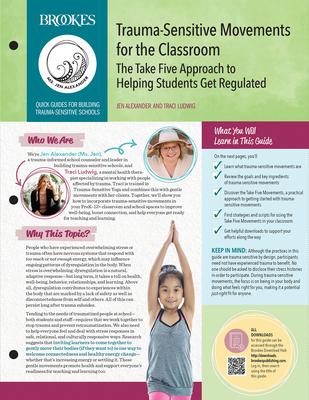All learners can benefit from trauma-sensitive movements: gentle movements that tap into the benefits of yoga but use a trauma-sensitive approach by emphasizing personal safety and choice. Part of an essential series of laminated quick guides for preK-12 educators, this is your concise, practical introduction to using trauma-sensitive movements to improve your students' regulation, boost connection, and help everyone get ready for teaching and learning.
In a friendly, warm, and personal style, Jen Alexander and Traci Ludwig introduce this important topic and walk you through their unique "Take Five" approach to incorporating trauma-sensitive movements into any school day. Inside this quick guide, you'll:
- Learn more about the benefits and goals of trauma-sensitive movements
- Review the five key elements of trauma-sensitive movements
- Discover the Take Five Movements, a simple, highly effective approach to getting started with trauma-sensitive movements
- Find step-by-step guidance and scripts for using the Take Five Movements in any classroom, in just minutes a day
- Learn the dos and don'ts of trauma-sensitive movements
PRACTICAL DOWNLOADS INCLUDED! Six interactive downloads--including printable posters for the classroom, an FAQ, and a Get Regulated lesson plan--expand on the tips in this quick guide and help you apply them with your students.
About the Series: Quick Guides for Building Trauma-Sensitive Schools
Practical, friendly, and immediately useful, this series of laminated quick guides addresses the essentials of building trauma-sensitive schools--safety, connection, regulation, and learning. Jen Alexander has collaborated with experts around the globe to bring educators tips, strategies, and activities they can apply right away in their classroom and school. Each guide in the series also includes downloadable lesson plans and exercises that educators can use to take action. Equally useful for experienced trauma-sensitive educators or those just getting started, these quick guides will help school staff create environments that support every person's well-being and learning.
